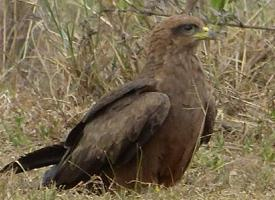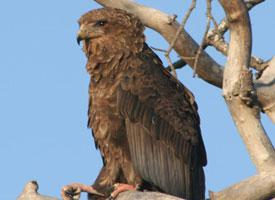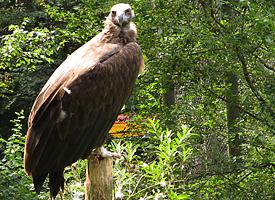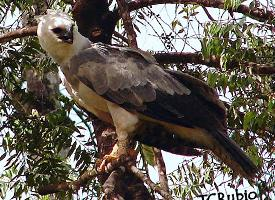
Váhy a míry
| Délka | od 55 do 59 cm |
|---|---|
| Hmotnost | 900 g |
| Délka rozpětí křídel | od 135 do 155 cm |
Stav ohrožení
| Ohrožen |
Popis zvířete
The Black Kite (Milvus migrans) is a medium-sized bird of prey, notable for its adaptability and widespread distribution across the globe. This raptor belongs to the family Accipitridae, which includes hawks, eagles, and other kites. With its keen eyesight, agile flight, and scavenging habits, the Black Kite plays a significant role in the ecosystems it inhabits, ranging from warm temperate to tropical regions.Appearance
Adult Black Kites typically measure between 48 to 60 cm in length, with a wingspan ranging from 135 to 155 cm. They weigh approximately 500 to 1,000 grams, with slight variations based on geographic regions. The species exhibits a somewhat uniform dark brown coloration across its plumage, with lighter streaks or mottling on the head and underparts. The wings are long and pointed, with a distinctive forked tail that is less pronounced than that of the Red Kite. This forked tail, alongside their soaring and gliding flight style, makes them easily identifiable in the sky.
Habitat and Distribution
Black Kites are remarkably adaptable and can thrive in a variety of habitats, including forests, wetlands, grasslands, and even urban areas. They are known for their opportunistic feeding habits, which allow them to exploit various food sources. Their distribution is extensive, covering large parts of Europe, Asia, Africa, and Australia. The species is migratory in the northern parts of its range, where winters can be harsh, but it tends to be resident or partially migratory in warmer regions.
Diet and Feeding Habits
Primarily scavengers, Black Kites have a diverse diet that includes small mammals, birds, fish, and insects. They are also known to feed on carrion, garbage, and waste, which is why they are often seen near human habitation, landfills, and slaughterhouses. Their opportunistic nature means they can quickly take advantage of food sources, demonstrating remarkable adaptability in various environments.
Behavior and Reproduction
Black Kites are generally solitary or found in pairs, although they may form larger groups when food is abundant. They are territorial during the breeding season, which varies according to their geographic location. The nests are built high in trees or on cliffs, where pairs lay 2 to 4 eggs. Both parents share responsibilities for incubation and feeding the young, which fledge after 7 to 8 weeks.
Conservation Status
The Black Kite is classified as Least Concern by the International Union for Conservation of Nature (IUCN), thanks to its vast range and large population. However, it faces threats from habitat destruction, pollution, and persecution in some areas. Despite these challenges, the Black Kite remains one of the most common birds of prey, a testament to its resilience and adaptability.
In summary, the Black Kite is a fascinating raptor, characterized by its broad distribution, versatility, and distinctive appearance. Its presence across various landscapes highlights the bird's remarkable ability to adapt and thrive in a changing world, making it a subject of interest for both ornithologists and nature enthusiasts alike.
Mapa výskytu

Podobná zvířata
Nové fotografie zvířat
Top 10 zvířat
- Elephant hawk moth (Deilephila elpenor)
- Common house mosquito (Culex pipiens)
- Fruit fly (Drosophila melanogaster)
- Common cockchafer (Melolontha melolontha)
- Australian box jelly (Chironex fleckeri)
- Colossal squid (Mesonychoteuthis hamiltoni)
- Wasp spider (Argiope bruennichi)
- Moustached guenon (Cercopithecus cephus)
- Diana monkey (Cercopithecus diana)
- Common reed warbler (Acrocephalus scirpaceus)


